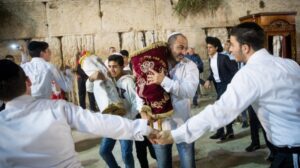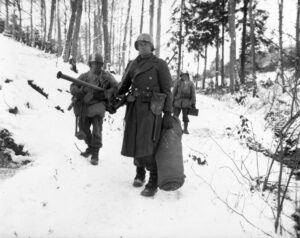
Tet celebration in Vietnam
BY DEBRA KEEFER RAMAGE
What makes us human? Is it our capacity to love, to imagine the numinous, to conceive of our own Creator? Or is it our belief that we are somehow beyond the reach of the natural, so that we try to separate civilization from our fragile, earthly nature? Or is it whatever demon within our souls that leads us to do an unspeakable act called “war”?
As long as there has been human civilization, there has been war. As long as there has been human civilization, there have been a plethora of religions, in which certain days or weeks are set apart and designated as holy. When these holy days and unholy wars coincide, the contradictions of being human are projected – large and stark and undeniable.
In the present war* in the Gaza Strip and Israel, the appalling attacks by Hamas took place on one of the days holy to Judaism, the oldest of the three Abrahamic religions that dominate the area. (*One of the anxieties of writing for a small print publication is the delay between writing and publishing and being read. Since I pray daily for this terrible war to end, I hope that by the time you read this, at least, it will be the “recent war” rather than the “present war.”)

Simchat Torah celebration in Israel
In fact, Oct. 7, 2023, was a double holiday, simultaneously Shemini Atzeret and Simchat Torah. Shemini Atzeret is the culmination of a string of autumnal holy days, starting with Rosh Hashanah (the Jewish New Year) followed in 10 days by Yom Kippur (the Day of Atonement) and then five days later by the seven-day “Feast of Booths,” Sukkot. Shemini means “eight” so this day can be considered as Sukkot’s eighth day. The meaning of “atzeret” is debated, and sometimes given as restraint, remaining, or closing. Simchat Torah is more straightforward – a celebration of the gift of the Torah.
It’s possible that the coinciding of this cruel and audacious attack on a day of relaxing, feasting and celebration was meant to make it more painful for the victims, but we can’t really say, because in that level of suffering it’s hard to measure specific effects. But the use of holy days in scheduling offensives is certainly nothing new to warfare. In 1968, the army of North Vietnam launched an offensive against the south and their American allies during Tet, the most important holiday of Vietnamese Buddhists. The timing was definitely part of their strategy. It was successful in the long run, since it turned public opinion in the U.S. against the war, although it took seven more deathly destructive years to actually end it. And in 1973, Egypt and six other Arab nations combined to attack Israel on

Syrians celebrate Eid during a brief truce in 2016.
Yom Kippur, another timing that no one could pretend was a coincidence.
Equally, when a war drags on, sometimes a holy day is grasped desperately as a chance to make peace, even if only temporarily. Not going too far back in time, I start an examination of these things by looking at stories of Christmas during the American Civil War.
One of about a dozen books I owned as a child, and re-read obsessively, is “Little Women” by Louisa May Alcott. Its opening paragraph is seared into my memory:
“‘Christmas won’t be Christmas without any presents,’ grumbled Jo, lying on the rug. ‘It’s so dreadful to be poor!’ sighed Meg, looking down at her old dress. ‘I don’t think it’s fair for some girls to have plenty of pretty things, and other girls nothing at all,’ added little Amy, with an injured sniff. ‘We’ve got Father and Mother, and each other,’ said Beth contentedly from her corner. The four young faces on which the firelight shone brightened at the cheerful words, but darkened again as Jo said sadly, ‘We haven’t got Father, and shall not have him for a long time.’ She didn’t say ‘perhaps never,’ but each silently added it, thinking of Father far away, where the fighting was.”

Jo March of ‘Little Women’ facing Christmas without Father
The first third or so of this literary classic is exactly what I am looking for in this article – a tale of Christmas and war, where the two sides in the war each believe they are “true Christians” and the other side is evil. And yet it was literally a war where families fought against each other, and also a holy crusade to determine the future of an entire subset of the nation, the enslaved Africans. Strong stuff for a little girl.
I have laid out in past instances of this column how the Christmas we know today, in the U.K., the U.S., and other Anglophone nations, was “invented” in Victorian England, and swiftly copied by the U.S. This invention slightly pre-dated the American Civil War, so by 1861, the newly minted Christmas was possibly at the height of its importance and popularity. Perhaps this explains why Anthony Trollope wrote not one but several Christmas stories (which, to his annoyance, his publishers demanded from him every year) set in the U.S. during the Civil War. At least one of them, “The Two Generals,” was based loosely on true incidents. See tinyurl.com/DKRatSSP-Xmas for a blog post by Dr. Ellen Moody, a Trollope scholar, on two of these Christmas-in-the-Civil-War short stories.

‘The Truce in the Forest,’ 1944
By far the most famous story of Christmas and war, and possibly of any holy day and war in the modern era, is the story of the 1914 Christmas truce in the early days of the trench warfare in Europe that characterized much of World War I, or the Great War as it was known at the time. This infamous story of combatants emerging from their trenches, sharing food, singing carols in their own languages, and even playing a game of football, before separating back to their sides and resuming the killing, has been made into a poem, a play, at least seven books (www.goodreads.com/list/show/45835.1914_Christmas_Truce) and more than one movie, as well as inspiring scores of magazine and newspaper articles.
An original play called “All Is Calm” was performed by Theater Latte Da in Minneapolis from 2007 to 2021, and also toured North America, and is now being staged (since 2021) in Madison, Wis., at the Four Seasons Theatre. It also spun off a music CD from Theater Latte Da and the vocal group Cantus. Most of the North American versions of this story are a bit oversimplified, as the U.S. did not enter the war until 1917, over two years later. A French film, “Joyeux Noel” (2005), gives a much more detailed and nuanced account of the incident, emphasizing the role of hymns, and also includes the oft-ignored fact that many of the leaders involved were punished for allowing peace to break out in that unseemly fashion.

Theater Latte Da’s ‘All is Calm’ in a 2019 performance
By the time World War II came about, such gentlemanly behavior amidst carnage would have been both physically and psychologically impossible. Still, there was at least one small detente that has been recorded and verified between American and German combatants during the immediate aftermath of the Battle of the Bulge.
This story, first told in Reader’s Digest in 1973 by Fritz Vincken, who was 12 years old when it occurred, has become known as “The Truce in the Forest.” It concerns Fritz and his mother, living in an isolated forest cottage near the battle site, and three American soldiers and four Wehrmacht soldiers, all but one of them teenagers. The soldiers came in two separate groups seeking shelter for one night until they could find their units in the daylight. Fritz’s mother made them surrender their arms to her, then fed them and tended their wounds as they stayed through the night.
As the Middle East, cradle of civilizations and of religions, but also no newcomer to war, has been the locus of many modern conflicts, stories like this grow in number. Not all are so heartwarming. The execution by hanging of Saddam Hussein was scheduled and carried out on the morning of Eid al-Adha, Islam’s most sacred holy day. Critics and Muslim theologians protested this, saying it would aggravate already painful divisions in Iraq, which it possibly did, leading to increasing violence, rather than closure.
During the Syrian civil war, a conflict that started in 2011 and is still going on 12 years later, this holiday, called Eid for short (there is another Eid – Eid al-Fitr, which is when the Ramadan fast is broken), again entered global news streams. In September 2016, a brief truce was arranged for Eid al-Adha. It was hoped this would lead to peace, and a cease-fire began in December, which lasted four months. After American withdrawal and a deal with Syrian Kurds, the war has settled into a low-level conflict.
Despite our fumbling, failure, and frequent setbacks, holy days are vital to our survival as humans, beings with a predilection for war. Even in times of stark horror and violence, they can call us back to the good parts of our humanity and be a beacon of peaceful days to come.
























